Understanding Pseudogout: Ayurvedic Approaches to Management
Understanding Pseudogout: Ayurvedic Approaches to Management, or calcium pyrophosphate dihydrate (CPPD) crystal deposition disease, is a form of arthritis characterized by sudden, painful swelling in the joints, particularly the knees. Unlike gout, which is caused by uric acid crystals, pseudogout arises from the deposition of calcium pyrophosphate crystals. It is often associated with aging and can significantly impact the quality of life. While conventional treatments focus on pain relief and inflammation control, Ayurveda offers a holistic approach that emphasizes balance, prevention, and natural healing.
What is Pseudogout?

Pseudogout is often mistaken for gout due to its similar symptoms. The pain typically occurs in episodes, with affected joints experiencing sudden inflammation, redness, and warmth. Commonly affected areas include:
- Knees: The most common site for pseudogout attacks.
- Wrists: Another frequent location for pain and swelling.
- Ankles: Affected less often but can be a source of discomfort.
The underlying cause of pseudogout involves the formation of CPPD crystals, which can occur due to metabolic imbalances, joint trauma, or previous joint surgery. Risk factors include age, genetic predisposition, and certain metabolic conditions like hemochromatosis and hyperparathyroidism.
Symptoms of Pseudogout
Symptoms typically include:
- Sudden onset of joint pain, often severe.
- Swelling and tenderness in the affected joint.
- Stiffness and reduced range of motion.
- Symptoms that may resolve within a week but can recur.
Ayurveda: A Holistic Perspective
Ayurveda, an ancient system of medicine from India, emphasizes balance in the body’s energies, known as doshas: Vata, Pitta, and Kapha. Each dosha represents different physiological functions. Pseudogout is often viewed in Ayurveda as a condition resulting from an imbalance, particularly involving excess Kapha and Vata doshas.
Ayurvedic Diagnosis
In Ayurveda, diagnosis involves a comprehensive assessment, including:
- Pulse Diagnosis (Nadi Pariksha): Understanding the state of the doshas through pulse characteristics.
- Observation: Analyzing the patient’s physical appearance, tongue, and skin.
- Interrogation: Gathering information about lifestyle, diet, and medical history.
Treatment Principles in Ayurveda
Ayurvedic treatment for pseudogout focuses on:
- Balancing the Doshas: Restoring equilibrium among Vata, Pitta, and Kapha.
- Detoxification (Shodhana): Cleansing the body of accumulated toxins (ama) that contribute to inflammation.
- Rejuvenation (Rasayana): Strengthening the body and enhancing immunity.
Herbal Remedies for Pseudogout
Several herbs in Ayurveda are believed to help manage symptoms of pseudogout:
- Ginger (Zingiber officinale): Known for its anti-inflammatory properties, ginger can help reduce pain and swelling.
- Usage: Ginger tea or fresh ginger added to meals.
- Turmeric (Curcuma longa): Contains curcumin, which has potent anti-inflammatory effects.
- Usage: Turmeric can be consumed in warm milk or as a spice in food.
- Ashwagandha (Withania somnifera): An adaptogen that helps combat stress and supports the immune system.
- Usage: Available as a powder or capsule.
- Guggulu (Commiphora mukul): A traditional remedy for joint pain and inflammation.
- Usage: Often taken in the form of tablets or capsules.
- Brahmi (Bacopa monnieri): Helps in reducing stress and inflammation, beneficial for joint health.
- Usage: Consumed as a powder or in tea.
Dietary Recommendations
Ayurveda places significant emphasis on diet as a tool for managing health. For those suffering from pseudogout, dietary modifications can play a crucial role:
- Anti-Inflammatory Foods: Incorporate foods rich in omega-3 fatty acids, such as flaxseeds, walnuts, and fatty fish.
- Fruits and Vegetables: A diet rich in colorful fruits and vegetables can provide antioxidants and essential nutrients.
- Whole Grains: Opt for whole grains like brown rice, quinoa, and oats that are easier to digest.
- Spices: Use spices like turmeric, ginger, and black pepper, which have anti-inflammatory properties.
- Hydration: Staying well-hydrated helps in flushing out toxins and supporting joint health.
Lifestyle Modifications
In addition to dietary changes and herbal remedies, Ayurveda encourages specific lifestyle modifications to help manage pseudogout:
- Regular Exercise: Gentle exercises like yoga, swimming, or walking can enhance joint mobility and reduce stiffness.
- Stress Management: Practices such as meditation, deep breathing, and mindfulness can help reduce stress, which is vital for maintaining dosha balance.
- Adequate Rest: Ensure sufficient rest and sleep to promote healing and recovery.
- Weight Management: Maintaining a healthy weight can reduce the stress on joints, particularly for those prone to pseudogout.
Detoxification Therapies
Ayurveda includes various detoxification methods that may benefit individuals with pseudogout:
- Panchakarma: A set of therapeutic procedures designed to cleanse the body of toxins. It involves oil massages, steam therapy, and other cleansing techniques.
- Basti (Enema Therapy): Herbal enemas can help balance Vata dosha and promote detoxification.
- Swedana (Fomentation Therapy): Using steam to promote sweating can help eliminate toxins from the body.
Conclusion
Pseudogout can be a challenging condition, but Ayurveda offers a holistic framework for understanding and managing it. By focusing on balance, detoxification, and rejuvenation, individuals can experience relief from symptoms and improve their overall health. It is essential to consult with an experienced Ayurvedic practitioner who can provide personalized treatment plans and monitor progress.
Final Thoughts
While Ayurvedic approaches can complement conventional treatments, it’s crucial to maintain open communication with healthcare providers. Integrating both systems may offer the best outcomes for those struggling with pseudogout. Embrace the journey towards wellness with patience and commitment to a balanced lifestyle.
By understanding pseudogout through the lens of Ayurveda, individuals can empower themselves to take charge of their health, reduce pain, and enhance their quality of life.

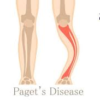


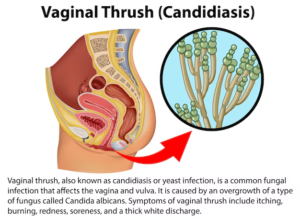
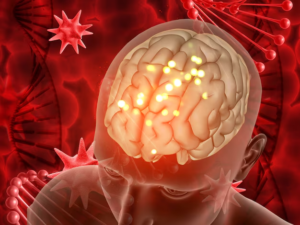
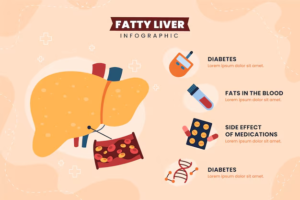
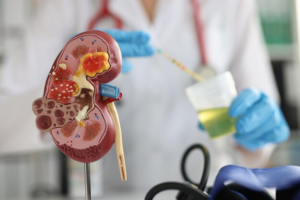
Leave a reply